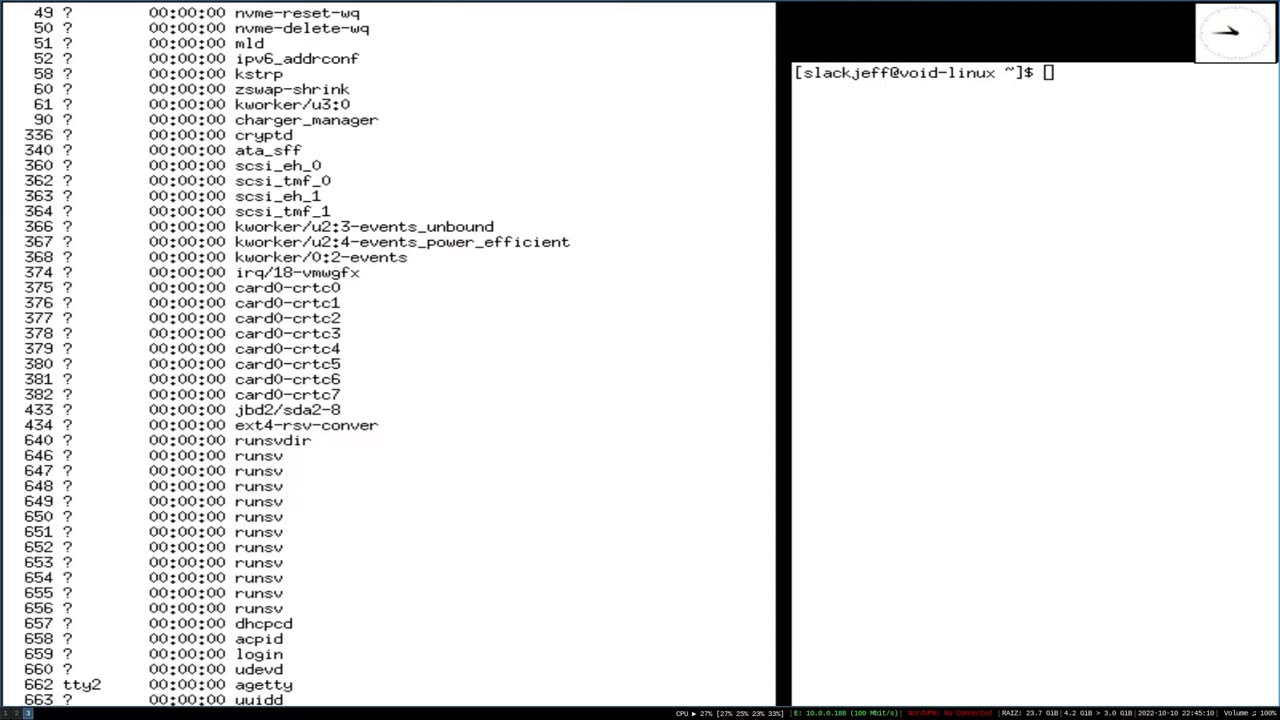Premium Only Content

"Void Linux Installation Guide"
**Void Linux Installation Guide**
Void Linux is a lightweight and flexible operating system distribution, ideal for users seeking a fast, efficient, and highly customizable system. This installation guide will walk you through the process of installing Void Linux, step by step.
**1. Preparation:**
Before starting the installation, make sure to back up all important data from your current system. Additionally, you will need:
- A bootable USB device with the Void Linux ISO image.
- Stable internet connection.
- Basic knowledge of disk partitioning and operating system installation.
**2. Booting Void Linux:**
Insert the bootable USB device into your computer and boot from it. If necessary, access the BIOS/UEFI boot menu and select the USB device as the boot option.
**3. Keyboard Configuration:**
Once Void Linux boots, you will be greeted by the command prompt. Before proceeding, configure the keyboard layout if necessary. Run the `loadkeys` command followed by your keyboard layout. For example, for the US layout, use:
```
loadkeys us
```
**4. Disk Partitioning:**
Use the `fdisk` or `cfdisk` tool to partition your computer's hard drive. Create at least two partitions: one for the root system (/) and another for the swap partition (optional). Format the partitions as needed (e.g., using `mkfs.ext4` for the root partition).
**5. Mounting Partitions:**
Mount the root partition to /mnt. If you created a swap partition, mount it to /mnt/swap. For example:
```
mount /dev/sdXn /mnt
```
**6. Installing the Base System:**
Install the Void Linux base system using the `xbps-install` utility. Run the following command:
```
xbps-install -S base-system
```
**7. System Configuration:**
Generate the `fstab` file to automatically mount partitions during boot:
```
xbps-reconfigure -f base-files
```
**8. Installing the Bootloader:**
Install the bootloader. If you are using GRUB, for example, execute:
```
xbps-install grub
grub-install /dev/sdX
grub-mkconfig -o /boot/grub/grub.cfg
```
**9. Final Configurations:**
Configure the hostname, timezone, language, and other system details according to your preference. Use standard Linux tools to perform these configurations (e.g., `hostnamectl`, `timedatectl`, `localectl`, etc.).
**10. Rebooting:**
After completing all necessary configurations, reboot your computer:
```
reboot
```
After rebooting, Void Linux will be installed and ready for use. You can further customize it by installing and configuring additional programs according to your needs.
This guide provides an overview of the Void Linux installation process. Be sure to consult the official Void Linux documentation for more detailed and up-to-date information.
-
 LIVE
LIVE
BubbaSZN
8 hours ago🔴 LIVE - SLAYING ZOMBIES W/ CATDOG UNTIL MY BDAY AT 12AM!
328 watching -
 4:47:55
4:47:55
SlingerGames
5 hours agoRumble Spartans, ASSEMBLE! | Push for 400 Followers
12.1K2 -
 5:22:07
5:22:07
xXFadedAngelXx
8 hours agoSPARTAN NIGHT! Featuring the Communiy! Thanks @OhHiMark! & @Phyxicx! for the invite
21.3K1 -
 LIVE
LIVE
AdmiralSmoothrod
7 hours agohalo MCC - Multiplayer Rumble No. 21 - its gonna get sticky
95 watching -
 1:35:22
1:35:22
BlackDiamondGunsandGear
5 hours agoNEW Glock Gen6 / Still Hate them / After Hours Armory
8.36K -
 8:49
8:49
Hollywood Exposed
6 hours agoBill Maher Explodes After Killer Mike Refuses Any Accountability On Air
6.14K12 -
 1:35:22
1:35:22
DLDAfterDark
6 hours ago $0.95 earnedThe Average Gunfighter - Gen 6 Glocks - The After Hours Armory
4.99K -
 12:31
12:31
Robbi On The Record
2 days ago $9.57 earnedWhy Nothing Feels Real Anymore | The Science, Culture, and Spiritual War Behind the Fog
66.7K31 -
 25:21
25:21
Stephen Gardner
8 hours agoWait Until You Hear This UNEXPECTED Trump Story!
27.6K72 -
 1:19:11
1:19:11
Squaring The Circle, A Randall Carlson Podcast
15 hours agoBreaking: New Evidence & Studies For Younger Dryas Impact Hypothesis
17.5K